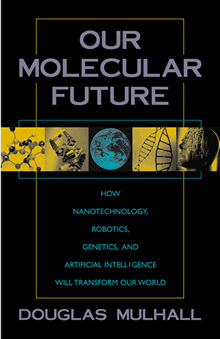|
<!--
var message1 = "The menu should already be visible on the left side of the browser window!";
var message2 = "You are already at www.ourmolecularfuture.com. Please use the menu on the left to navigate the site.";
var message3 = "This page is part of a frameset which will load now.";
function checkFrameset(display) {
if(!parent.menu)
{
alert(message3);
location.href="http://www.ourmolecularfuture.com/index.html?" + location.pathname;
}
else
{
alert(display);
}}
// function checkFrameset() {
// if(!parent.menu)
// location.href="../index.html?" + location.pathname;
// }
function MM_swapImgRestore() { //v3.0
var i,x,a=document.MM_sr; for(i=0;a&&i<a.length&&(x=a[i])&&x.oSrc;i++) x.src=x.oSrc;
}
function MM_preloadImages() { //v3.0
var d=document; if(d.images){ if(!d.MM_p) d.MM_p=new Array();
var i,j=d.MM_p.length,a=MM_preloadImages.arguments; for(i=0; i<a.length; i++)
if (a[i].indexOf("#")!=0){ d.MM_p[j]=new Image; d.MM_p[j++].src=a[i];}}
}
function MM_swapImage() { //v3.0
var i,j=0,x,a=MM_swapImage.arguments; document.MM_sr=new Array; for(i=0;i<(a.length-2);i+=3)
if ((x=MM_findObj(a[i]))!=null){document.MM_sr[j++]=x; if(!x.oSrc) x.oSrc=x.src; x.src=a[i+2];}
}
//-->
|
|
Despite its focus on many potential futures, this book is also based on present realities and our natural past. In 2003, The Futurist Magazine carried a cover story about Our Molecular Future that answers this question: is it science, or science fiction? Here are some examples: --Desktop factories, artificial retinas, molecular sized motors, genetic computing, and materials that slow light to zero: these exist today. --The logarithmic rate of increase in computing power is a fact. Robotic pets that respond to voice commands are a fact: not science fiction. --Imagine a world where we can print self-illuminating pictures and solar cells from our home printer, build buildings with materials that are exponentially stronger than today's steel, and engineer our kids to our own specifications. Science fiction? Discoveries that make these futures possible were announced in April, 2002, a few weeks prior to this book being published. --A nanostructured alloy with a "theoretical best strength" four times greater than steel has been invented by scientists at the Idaho National Energy and Environment Laboratories. --Self-illuminating, printable materials have been invented by Cambridge Display Technologies. --A lesbian couple has engineered their child to be deaf like they are, thus generating a storm over the rights of gay couples to have children, the rights of the disabled, and the morality of designer babies. --Moreover, imagine one of the most powerful nations incapacitated by an earthquake. This happened in 1923 when the Great Kanto Earthquake flattened Tokyo and crippled the Japanese economy. Earthquakes of such magnitude occur on a regular basis. They pose real threats to present day Japan and the globalized economy. They are not science fiction. --A tsunami that engulfed the west coast in 1700 is borne out by geological evidence. --The earthquake that made the Mississippi flow backwards in 1815 is well established. --The climate changes that brought years without summer between 536 and 540 a.d. are recorded in tree ring samples. --A thousand foot high wave that swept trees from a mountain in Alaska in 1958 has been verified through stark photographic evidence. These are real. They have occurred. They constitute the foundations for this book. This book makes the case that if we ignore the reality that is exploding around us, we may find ourselves in the same position as New York City did when they built their emergency command post in what they thought was the most impregnable place in Manhattan: the World Trade Center. The impossible has happened. Let's get used to it. Nevertheless, this book does not claim that the scenarios described therein actually "will" occur. It is probable, as the title suggests, that these technologies will transform the world that we live in, but the book takes pains to emphasize that we face many possibilities in that transformation. Among those possibilities is that such a transformation may never occur, or may be seriously delayed. We may be thrown back rather than forward if big natural disruptions cripple our capacities. Thus, an enlightened molecular future is by no means guaranteed. This book focuses on strategies for defending against known natural hazards, rather than on specific solutions. The task of specific solutions is left to those who are qualified to do that: the scientists. Their works are heavily footnoted and referenced in the text, for readers who wish to know more about how these technologies work. In the words of one individual quoted in this book: "If it doesn't sound like science fiction, then it's probably wrong". Douglas Mulhall February 11, 2003 |
|
|
|
For review copies or press materials,
contact Jill Maxick,
|
|
|
Click here if this page loaded without a navigation menu!
©Douglas Mulhall 2002-2015
